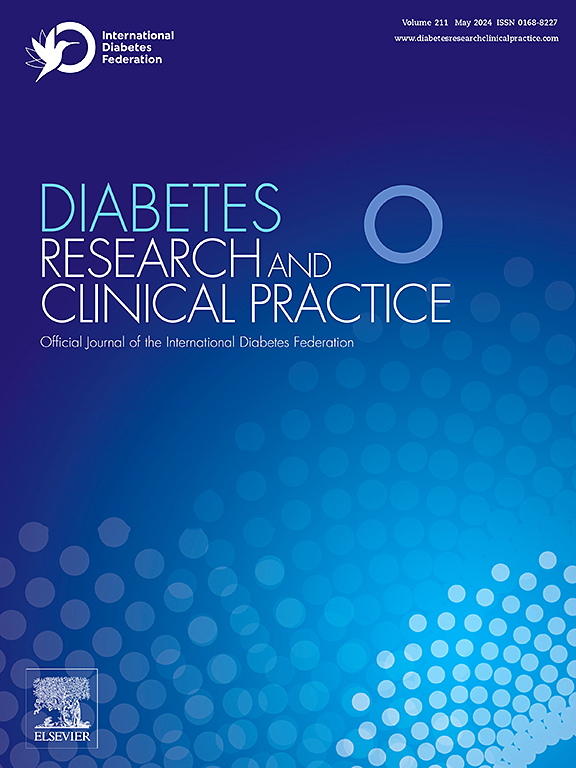降低微血管疾病发病率的高强度体力活动的最佳量:来自英国生物银行的前瞻性队列研究
IF 6.1
3区 医学
Q1 ENDOCRINOLOGY & METABOLISM
引用次数: 0
摘要
目的探讨不同强度体力活动(PA)持续时间与微血管疾病(mvd)风险之间的量-反应关系,重点确定高强度体力活动(VPA)的最佳量。方法在这项前瞻性队列研究中,使用腕带加速度计测量不同强度的PA。mvd包括肾病、神经病变和视网膜病变,从医院住院记录中确定。使用Cox模型和受限三次样条来评估相关性。结果本前瞻性研究纳入92,275名参与者(40,256名男性和52,019名女性),平均(SD)年龄为61.7(7.8)岁。在7.9年的中位随访期间,共有5201人被诊断为mvd,其中2385人患有肾病,512人患有神经病变,2666人患有视网膜病变。VPA与总体mvd呈l型数量-响应关系(非线性<的P值;0.001),最佳量为38分钟/周(95% CI: 34, 44),相应的HR为0.71 (95% CI: 0.64, 0.77)。结论vpa为34-44分钟/周,总体mvd风险降低23% - 36%,此后风险下降不明显。这些发现可能对未来修订体力活动建议以更好地改善微血管健康具有启示意义。本文章由计算机程序翻译,如有差异,请以英文原文为准。
Optimal amount of vigorous-intensity physical activity for lowering incidence of microvascular diseases: A prospective cohort study from the UK Biobank
Aims
To explore the amount–response associations between the duration of physical activity (PA) at different intensities and the risks of microvascular diseases (MVDs), with a particular focus on identifying the optimal amount of vigorous-intensity PA (VPA).
Methods
In this prospective cohort study, PA of different intensities were measured using wrist-worn accelerometers. MVDs, including nephropathy, neuropathy, and retinopathy, were identified from hospital inpatient records. Cox models and restricted cubic splines were used to evaluate the associations.
Results
This prospective study included 92,275 participants (40,256 males and 52,019 females) with a mean (SD) age of 61.7 (7.8) years. During a median follow-up of 7.9 years, a total of 5,201 individuals were diagnosed with MVDs, including 2,385 with nephropathy, 512 with neuropathy, and 2,666 with retinopathy. An L-shaped amount–response association for VPA and overall MVDs was observed (P value for non-linearity < 0.001), with the optimal amount of 38 (95 % CI: 34, 44) minutes/week, corresponding to an HR of 0.71 (95 % CI: 0.64, 0.77).
Conclusion
VPA of 34–44 min/week were associated with 23 %-36 % lower risks of overall MVDs, with a less pronounced decline in risk thereafter. These findings may have implications for the future revision of physical activity recommendations to better improve microvascular health.
求助全文
通过发布文献求助,成功后即可免费获取论文全文。
去求助
来源期刊

Diabetes research and clinical practice
医学-内分泌学与代谢
CiteScore
10.30
自引率
3.90%
发文量
862
审稿时长
32 days
期刊介绍:
Diabetes Research and Clinical Practice is an international journal for health-care providers and clinically oriented researchers that publishes high-quality original research articles and expert reviews in diabetes and related areas. The role of the journal is to provide a venue for dissemination of knowledge and discussion of topics related to diabetes clinical research and patient care. Topics of focus include translational science, genetics, immunology, nutrition, psychosocial research, epidemiology, prevention, socio-economic research, complications, new treatments, technologies and therapy.
 求助内容:
求助内容: 应助结果提醒方式:
应助结果提醒方式:


